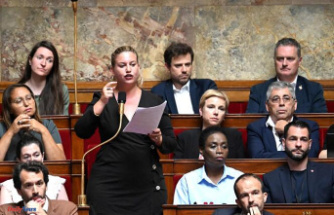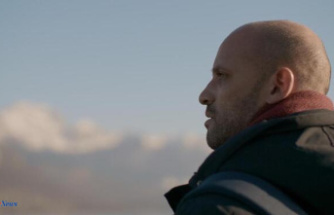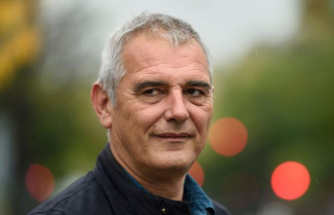"For many years it has been said that the future of poetry and literature is bad, and it is true because people are in a hurry and reading a novel costs a lot. You cannot put 800 pages into a guy who is in a hurry. But putting a cassette in a car or hearing a song on the radio is much easier, and in that song you can insert a poem that will leave him riveted and have to park the car in the ditch and start thinking. A part of the future is there A song has a power that a novel does not have: the power to be memorized in its entirety".
Publisher: Genueve edicionesYear of publication: 2022Available in Genueve Ediciones: here.Available in Unebook: here.
José Agustín Goytisolo (Barcelona, 1928-1999) spoke in these terms, just before the premiere in 1994 of the mythical show La voz y la palabra, about the symbiosis between music and poetry, the common thread along with the copious work of the scholar's poet, groundbreaking and fascinating essay Your song among his songs. José Agustín Goytisolo y la música, with which the professor, musician and writer Francisco Javier Ayala, obtained the VII International Prize for Literary Research “Ángel González” awarded by the University of Oviedo.
Before delving into the work of someone who defined himself as "a left-wing sniper", set to music by the Goliardos, Paco Ibáñez, Amancio Prada, Carles Margarit, Salva Jiménez or Rosa León, among many other performers, Ayala establishes a theoretical framework and a historical one to approach it. In the first, the author explores the complexities of the relationship between music and poetry at a phonic, grammatical and semantic level, and although he acknowledges that "both are arts inextricably linked in time from the very germ of their creation", he also points out that "in the poem two systems converge, one musical and the other literary, which despite their complementarity use clearly differentiated languages and resources".
Regarding the historical framework, Ayala dedicates a chapter to the relations of the Mid-Century poets and their respective poetics with music, initially dwelling on the links with the new song -which emerged in Spain at the beginning of the 60s- and on the important role that this movement plays in the dissemination of the poetry of some of the poets of the group. As the professor explains, "the singer-songwriters came to solve one of the problems that compromised poetry continued to face in the middle of that decade, such as the imbalance between their majority claims and the poor reception of the texts, providing themselves with a prestigious instrument , as is the poem, which gave quality and aesthetic value to his songs".
Likewise, the essay offers a careful incursion into the unequal dissemination that the work of five of the poets of the Generation of the 50s has had through music: Ángel González, José Manuel Caballero Bonald, Jaime Gil de Biedma, Claudio Rodríguez and Jose Angel Valente. This preliminary tour of many of the performers and composers who have written the history of popular music in the Spanish language over the last sixty years offers an overview that allows setting up the appropriate contextual and comparative framework to better understand the real dimension of music. Goytisolo's poetry set to music (to date, 189 songs written on 76 poems) and its importance in the context of contemporary popular music.
As Ayala details in the volume, at the beginning of the sixties is when Goytisolo's first contacts with the fourth art took place. On January 16, 1961, one of the many tributes to Miguel Hernández, who had become an emblem of the fight against Francoism, was paid at the University of Barcelona. "Goytisolo contributes to the act with Historia conocida, a composition specially written for the occasion and which appears published that same year -incorporated into Section III: «Hacia la vida» of Claridad- in the compilation Años decisivos, his first book with a manifest lyrical intentionality. The poem is one of the first that Paco Ibáñez sings", explains the author, who highlights "the poet's direct contact with popular sources, as well as the early adoption of traditional models from which Goytisolo builds a renewing lyrical proposal".
Ayala abounds in a juicy anecdote from those years in which Goytisolo consolidated "his commitment to committed poetry, heir to the social and expansive of its limits, with the inclusion of one of his Forgotten Songs in the controversial Canti della nuova resistenza spagnola, 1939-1961 (Einaudi, 1962). "Soldier yes, a poem that appears in the songbook published under the title Canción de paz -and as anonymous, to preserve the identity of its author-, becomes a hymn of the struggle against the regime", he explains. "The version of this song published years later by Francisco Curto also favors that, by mistake, the text continues to be considered, in later versions, as one more of the songs of the traditional Spanish repertoire. Thus, the express wish of the poet to become an anonymous author of the popular tradition is fulfilled".
But if there is a decisive aspect of Goytisolo's relationship with music and in the massive popularization of his words, it is his relationship with Paco Ibáñez. As Ayala points out, "the encounter between Ibáñez's music and his poetry also constitutes one of those great moments in history in which, withdrawing from time, as in a flash of perfection, art reaches its highest levels" .
The successful functioning of this duo is based for Ayala on the fact that "both find in the poetic word a defensive weapon against the corrosion of the world that they have had to live in. The combative awareness towards which the poet directs his verses at each step is undoubtedly one of the determining factors of that dialogue that, uninterrupted over time, has taken place between his poetry and musical language". The other, he explains, is the musicality and expressiveness of Goytisolo's lyrical production as a whole. In this last plot, "poetic language is assimilated to that of singer-songwriters: it is simple and direct, and it stays away from any hint of rhetoricism, but without renouncing ambivalence, the implicit codes that are common to poetic language and that require attentive listening and the recognition of certain interpretive keys shared with the reader".
Beyond the aforementioned La voz y la palabra tour, which traveled the world for three years, the great peak of popularity of this tandem is marked by the song Palabras para Julia, whose success is unprecedented. "Goytisolo himself recognized years later that the sale of his poetry books skyrocketed from that moment," Ayala points out about a piece whose significance in the context of contemporary popular song is defined by having more than seventy published versions. in styles as diverse as flamenco, jazz, rock, pop, or lyrics.
The volume closes with a profuse and joyful textual analysis of poems and songs by the man who left a literary legacy made up of more than 20 titles in which, with a language devoid of lyrical flourishes, he alternated urban themes and political commitment with other cutting more intimate, marked by a melancholic residue almost omnipresent in everything he wrote. Perhaps for this reason, the verses of José Agustín Goyitisolo found, as this essay attests, a perfect accommodation in the musical virtues of many of the great performers of recent decades and today.
According to the criteria of The Trust Project












